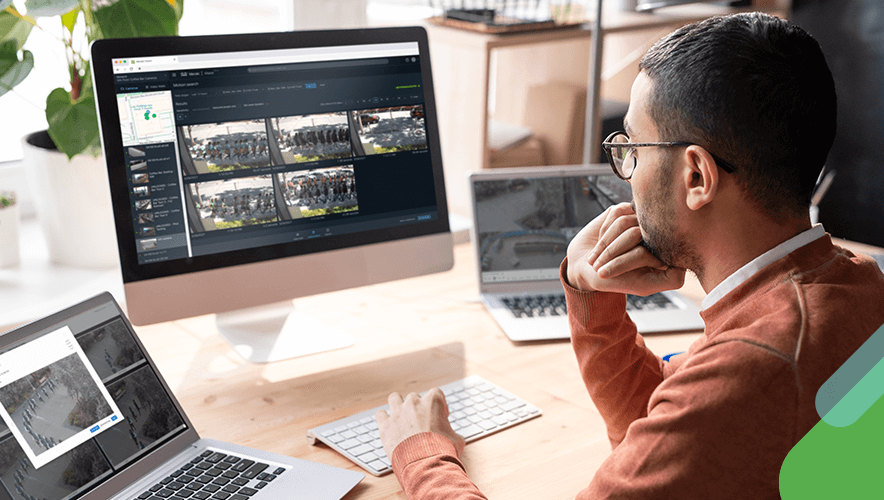Armed With Cloud, Security Pros Do More With Less
More than ever, organizations want to reassure employees and visitors of their safety as they come to work, meet up with others, or shop—a philosophy that’s putting more pressure than ever on physical security professionals.
And although funds are increasing, with global budgets expected to reach $171 billion by 2027, there’s always a catch.
Physical security teams increasingly seek innovative solutions that solve traditional challenges, like protecting people, property, and goods, as well as deliver new capabilities, such as occupancy monitoring to safeguard people’s health.
Even Better Together
These days, physical security professionals are more likely to team up with their organization’s information technology (IT) colleagues. In fact, 52% of organizations had some combination of cybersecurity, physical security, and business continuity converged into one team in 2020, according to The ASIS Foundation.
Benefits include:
- Aligning security and risk management with corporate goals
- Advancing physical and technology integration and security operation centers
- Improving efficiency
- Reducing costs
While only 24% of organizations have fully converged physical and cybersecurity, of those surveyed, about 66% have physical security, cybersecurity, and/or business continuity teams that work closely together.
Pooling the knowledge of physical security professionals with the expertise of networking and cybersecurity specialists creates an even stronger, more versatile team. Like a rope, the individual strands of proficiency are stronger and more resilient when combined.
Having the right people is, of course, crucial. Including the right technology is critical.
To the Cloud
More and more organizations are relying on the cloud to run their infrastructure, which is true for physical security as well.
Rather than use on-site servers and operate separate infrastructure for network video recorders (NVRs), physical security teams are rolling out IP cameras that leverage the cloud. By adopting hosted technology for computing, physical security leaders not only use opex funds—not capex monies—but can nimbly scale as needs increase or decrease.
In addition, cloud-based solutions can feature a single dashboard that gives insight into every camera the team oversees, providing status reports for each device. The dashboard delivers offline alerts and eliminates time-consuming and manual processes like troubleshooting and on-site diagnostics for the hundreds or thousands of cameras on a campus or building site.
To the Moon
Transitioning to the cloud is not just about bidding goodbye to the costs and complexities of on-premises equipment.
It’s also about saying hello—to new insights, innovations, and opportunities, and by deploying a cloud-first infrastructure.
Some organizations are deploying smart cameras at each door as their employees return to work. These cameras match employees based on their badges, which are equipped with Bluetooth® tags, improving access for authorized individuals and enhancing evacuation procedures in the case of emergency.
Enterprises also use insight from smart cameras to help with lease modification and remodeling plans. By tracking room or building usage, they learn which rooms, hot desks, or buildings are most or least used and can save space or money by renegotiating based on current usage.
On the Clock
The smart camera’s simplified rollout process and centralized dashboard save time and eliminates manual profile management so physical security teams can focus more on innovation, training and certification, and business services.
Likewise, teams will no longer spend hours watching often-grainy videos to find footage of incidents. Instead, natural language motion search allows physical security professionals to use words to narrow down searches to timeframes, then view these windows in crystal clear images. They can easily share footage via MPEG files, as there’s no need to send it out for costly, time-consuming reformatting from a proprietary form factor.
To the Stars
With cloud-based IP smart cameras, not only will physical security teams spend far less time on error-prone manual processes like software updates and maintenance, they will be able to act quickly when incidents occur.
Organizations will save time and money, while simultaneously increasing the security of their people, places, and things—and empowering security professionals’ ability to do more and do it better.
Modernize your security and create safer environments with Cisco Meraki.
Sponsored Content by Cisco Meraki
